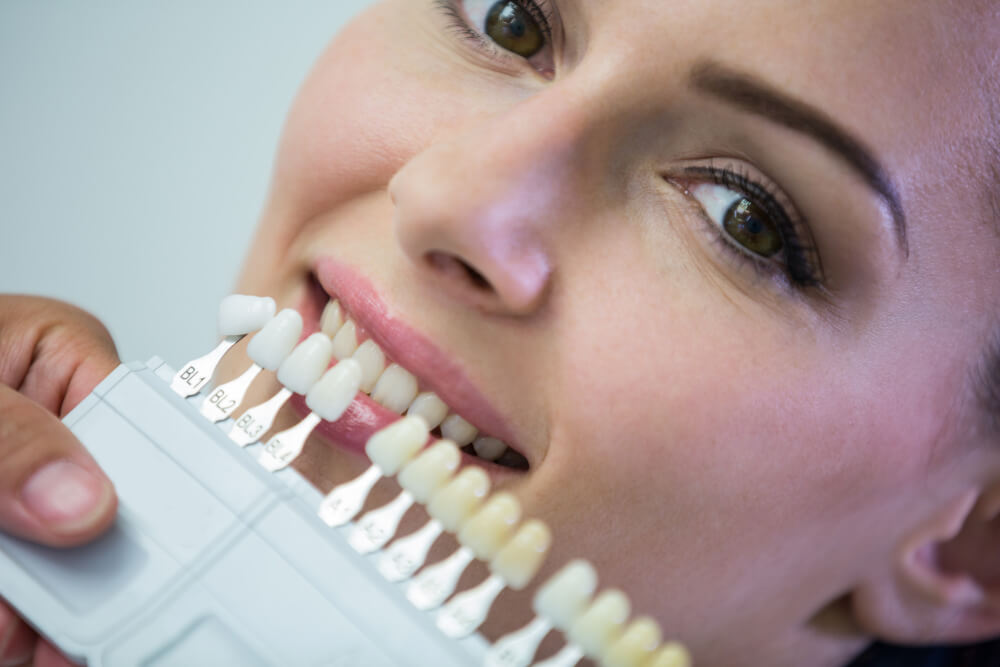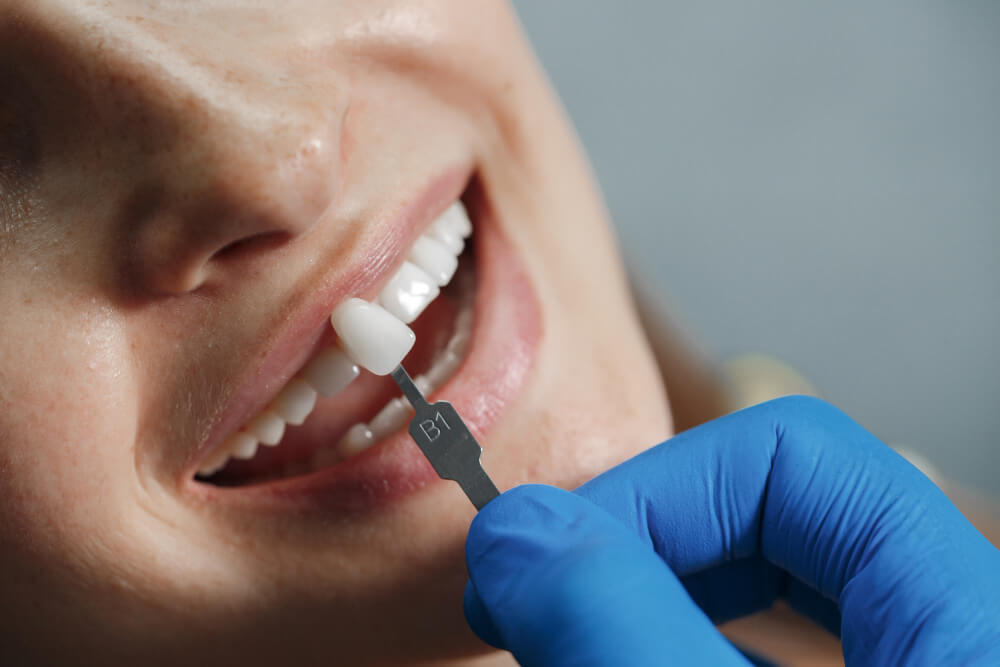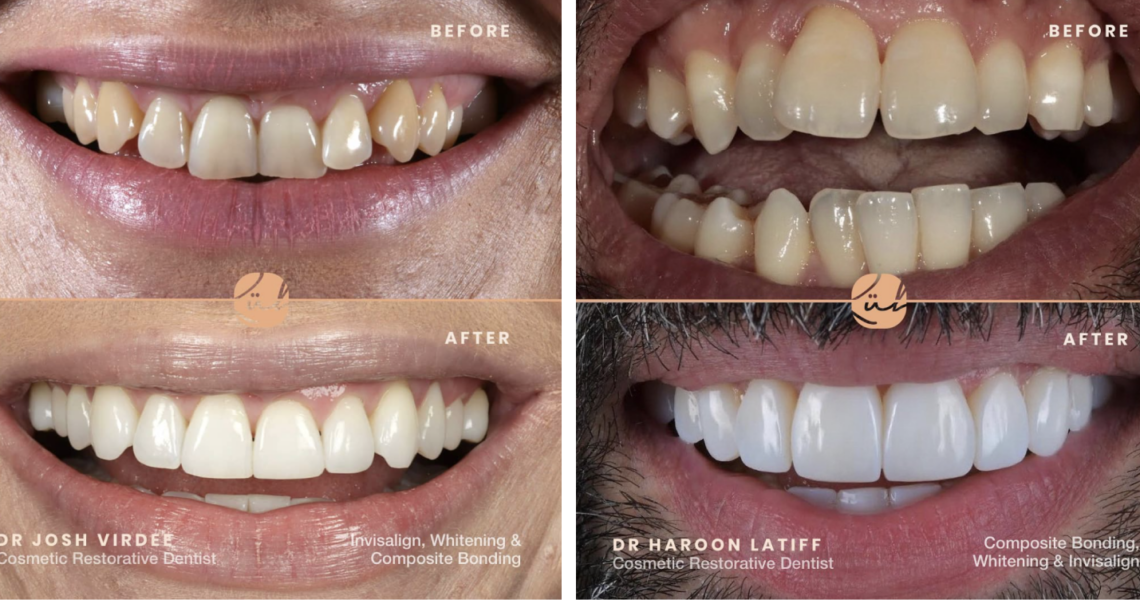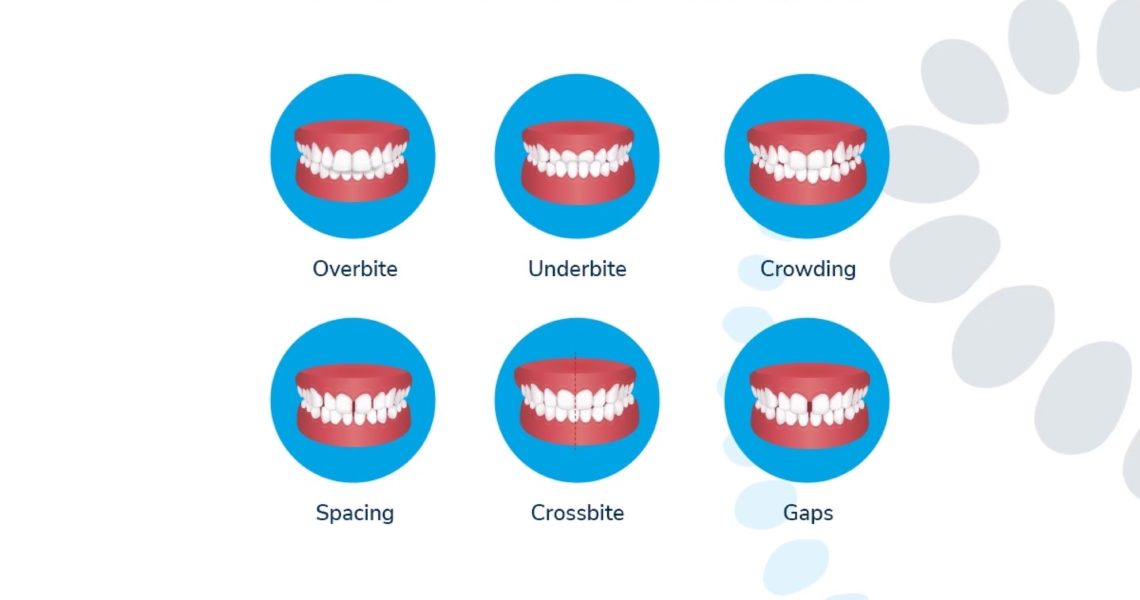Composite Bonding: The Fast, Painless Way to Fix Your Smile
Are you bothered by chipped teeth, gaps, or discoloration? Composite bonding might be the quick solution you’ve been looking for.
This modern dental technique can transform your smile in just one visit, without the pain or high costs of other cosmetic procedures.

What is Composite Bonding?
Composite bonding uses a tooth-colored resin material that’s applied directly to your teeth.
Your dentist shapes and polishes this material to match your natural teeth, creating a seamless look that fixes common smile concerns.
Unlike other cosmetic dental procedures, composite bonding:
- Typically requires just one appointment
- Preserves most of your natural tooth structure
- Involves minimal or no discomfort
- Costs significantly less than veneers or crowns
The composite resin material is made from a mixture of plastic and fine glass particles that create a strong, durable substance.
This innovative combination offers numerous benefits of composite bonding treatments including strength, flexibility, and the ability to closely match your natural tooth color.
This material bonds directly to your tooth’s surface, which means your dentist can be conservative with your natural tooth structure, preserving as much of it as possible.
“Composite bonding has revolutionized how we approach minor smile imperfections,” explains Dr. Sarah Chen, a cosmetic dentist with over 15 years of experience.
“We can make dramatic improvements in a single visit while keeping the patient’s natural teeth largely intact.”
The History of Composite Bonding
Composite bonding hasn’t always been the reliable, natural-looking solution it is today.
The technology has evolved significantly since its introduction to dentistry in the 1960s.
Early composite materials were prone to discoloration, wear, and breakage.
They also didn’t bond as effectively to tooth enamel, limiting their applications.
Today’s advanced composites are stronger, more stain-resistant, and available in a wider range of shades to match any tooth color.
The development of better bonding agents and curing lights has also improved the procedure’s success rate.
Modern LED curing lights harden the composite material more quickly and effectively than earlier models, creating a stronger bond and more durable result.
Common Problems Composite Bonding Can Fix
“I never smiled in photos because of the gap between my front teeth,” says Maria, a dental patient who chose composite bonding.
“After a 90-minute appointment, the gap was gone, and I couldn’t stop smiling!”
Composite bonding effectively addresses a wide range of dental issues:
Gaps Between Teeth (Diastemas)
Small to medium-sized gaps between teeth can be closed quickly with composite bonding.
The dentist applies the resin to the sides of the teeth, building them out until the space is filled.
This is particularly popular for gaps between front teeth, which can be especially noticeable when smiling.
Chipped or Cracked Teeth
Even minor chips and cracks can detract from your smile and potentially lead to further damage if left untreated.
Composite bonding restores the tooth’s original shape by filling in the missing portion with resin, preventing further damage while improving appearance.
Discolored Teeth
Some teeth develop stains that don’t respond to traditional whitening treatments.
This is particularly common with tetracycline stains, fluorosis, or internal tooth discoloration from trauma.
Composite bonding can cover these stubborn stains, giving teeth a fresh, white appearance.
Short or Uneven Teeth
Do you have teeth that appear too short or uneven compared to neighboring teeth? Composite bonding can lengthen teeth and create a more balanced, harmonious smile line.
This is often combined with gum reshaping for optimal results.
Minor Misalignment
While severe misalignment requires orthodontic treatment, minor issues can sometimes be camouflaged with strategic composite bonding.
Your dentist can apply resin to make slightly crooked teeth appear straighter without the need for braces or aligners.
Worn Teeth Edges
Years of grinding, clenching, or simply aging can wear down the edges of your teeth, making them look flat or aged.
Composite bonding can rebuild these worn edges, restoring a more youthful appearance to your smile.
The Composite Bonding Process: What to Expect
Wondering what happens during a composite bonding appointment? Here’s the detailed step-by-step process:
Initial Consultation
Before any work begins, you’ll meet with your dentist to discuss your concerns and goals.
During this consultation, they’ll examine your teeth, take photos, and possibly X-rays to determine if composite bonding is the right solution for your specific situation.
The dentist will also discuss color options, potential limitations, and expected outcomes.
This is the time to ask questions and share any concerns you might have about the procedure.
Tooth Preparation
Unlike veneers or crowns, composite bonding requires minimal tooth preparation. In most cases, your dentist won’t need to remove any significant amount of tooth structure.
They’ll simply roughen the surface of the tooth with a mild etching solution or a special tool to create a better surface for bonding.
For teeth with active decay, your dentist will first remove the decayed portion before proceeding with bonding. This ensures the final result is built on a healthy foundation.
Shade Selection
Getting the color right is crucial for natural-looking results. Your dentist will use a shade guide to select the composite resin that best matches your natural tooth color.
Often, multiple shades are used to create depth and a more realistic appearance—lighter shades for the body of the tooth and slightly darker shades for areas that would naturally have more shadows.
“The art of composite bonding lies in the color selection and layering technique,” notes Dr. Michael Patel, a cosmetic dentist.
“We often use multiple shades and translucencies to mimic the natural variation seen in real teeth.”
Bonding Agent Application
Once the tooth is prepared, your dentist applies a liquid bonding agent to help the composite material adhere firmly to your tooth surface.
This creates a strong mechanical and chemical bond that keeps the restoration in place for years.
Composite Application and Shaping
Your dentist applies the composite resin in layers, hardening each layer with a special blue light. This light-curing process takes just seconds for each layer.
As the layers build up, your dentist shapes the material to create the desired form, whether that’s closing a gap, extending a chipped edge, or covering discoloration.
This is where artistry meets technical skill—the dentist must understand not just dental anatomy but also aesthetics to create a natural-looking result.
Hardening
Once the final shape is achieved, the entire restoration is thoroughly hardened with the curing light.
This ensures the material reaches its maximum strength and durability.

Finishing and Polishing
The final step involves trimming any excess material, adjusting the bite if necessary, and polishing the restoration to a natural-looking shine.
Your dentist uses special finishing burs, discs, and polishing pastes to create the correct contours and a smooth surface that feels natural to your tongue and looks like your own tooth enamel.
This meticulous finishing process can take as long as the application itself but is crucial for creating a result that blends seamlessly with your natural teeth.
Most patients report no pain during the procedure, and you can eat and drink normally the same day, though your dentist may recommend avoiding certain foods and beverages for the first 24-48 hours to allow the material to fully set.
Comparing Composite Bonding to Other Cosmetic Options
When considering smile improvements, it’s helpful to understand how composite bonding compares to other popular cosmetic dental procedures:
Composite Bonding vs. Porcelain Veneers
While both improve the appearance of teeth, there are significant differences:
Composite Bonding:
- Completed in one visit
- Less expensive ($250-$600 per tooth)
- Preserves more natural tooth structure
- Easier to repair if damaged
- Lasts 5-8 years on average
- Can discolor over time
Porcelain Veneers:
- Requires at least two visits
- More expensive ($925-$2,500 per tooth)
- Requires removal of more tooth structure
- More difficult and expensive to repair
- Lasts 10-15 years or longer
- Highly stain-resistant
“I tell patients that composite bonding is like getting a good quality paint job on your car, while veneers are more like replacing the entire body panel,” explains Dr. Chen. “Both improve appearance, but they differ in terms of invasiveness, longevity, and cost.”
Composite Bonding vs. Dental Crowns
Composite Bonding:
- Addresses primarily cosmetic issues
- Preserves most of natural tooth
- Less expensive
- Best for minor to moderate damage
Dental Crowns:
- Addresses both cosmetic and structural issues
- Requires significant tooth reduction
- More expensive
- Necessary for severely damaged teeth
- Lasts longer (15+ years with proper care)
Composite Bonding vs. Orthodontic Treatment
For issues like gaps or minor misalignment:
Composite Bonding:
- Immediate results
- Addresses appearance only
- Doesn’t change actual tooth position
- No long-term maintenance required
Orthodontic Treatment:
- Takes months to years
- Addresses actual tooth position
- Better for significant misalignment
- Requires retention to maintain results
Caring for Your Bonded Teeth
To make your composite bonding last (typically 5-8 years), follow these comprehensive care tips:
Daily Care Essentials
- Gentle Brushing: Use a soft-bristled toothbrush and non-abrasive toothpaste twice daily. Harsh, gritty toothpastes can scratch the surface of composite restorations, making them more prone to staining.
- Thorough Flossing: Clean between teeth daily with dental floss or interdental brushes. This helps prevent staining at the margins where the bonding meets your natural tooth.
- Rinse After Consuming Staining Foods/Drinks: When you can’t brush after consuming coffee, tea, red wine, or berries, rinse your mouth with water to reduce potential staining.
Protecting Your Investment
- Night Guard: If you grind or clench your teeth at night, ask your dentist about a custom night guard. This helps prevent excessive wear and potential fracturing of the bonded areas.
- Sports Guard: If you play contact sports, wear a mouthguard to protect both your natural teeth and your bonded teeth from impact damage.
- Break Bad Habits: Avoid using your teeth as tools (opening packages, biting nails, chewing pens) and minimize biting into very hard foods like ice, nuts, or hard candies.
Professional Maintenance
- Regular Dental Check-ups: Visit your dentist every six months for professional cleanings and to check the condition of your bonding.
- Professional Polishing: Occasionally, your dentist can polish your bonding to refresh its appearance and remove surface stains.
- Timely Touch-ups: Address any chips or wear promptly to prevent further damage and extend the life of your bonding.
Potential Drawbacks and Limitations
While composite bonding offers many benefits, it’s important to understand its limitations:
Durability Concerns
Composite materials aren’t as strong as natural tooth enamel or porcelain.
They can chip or wear down faster, especially if you have habits like nail biting, ice chewing, or teeth grinding.
Staining Potential
Unlike porcelain, composite resin is slightly porous and can absorb stains over time, particularly from coffee, tea, red wine, and tobacco.
Regular professional cleanings can help, but eventually, the bonding might need replacement due to discoloration.
Not Suitable for Every Situation
Composite bonding isn’t appropriate for major dental problems or for restoring teeth that endure heavy biting forces.
Your dentist might recommend alternatives if:
- You have significant misalignment requiring orthodontic treatment
- You have advanced gum disease that needs treatment first
- You grind your teeth severely and haven’t addressed this issue
- You need restoration on molars that handle most of your chewing forces
“Understanding the limitations of composite bonding helps set realistic expectations,” says Dr. Patel. “For the right candidate with the right expectations, it’s an amazing option. But it’s not a miracle solution for every dental problem.”
The Cost of Composite Bonding
One of the most appealing aspects of composite bonding is its affordability compared to other cosmetic dental procedures.
On average, composite bonding costs between $250 and $600 per tooth, depending on:
- The complexity of the procedure
- Your geographic location
- Your dentist’s experience and expertise
- The number of teeth being treated
Many dental insurance plans consider composite bonding a cosmetic procedure and provide limited or no coverage.
However, if the bonding is necessary due to trauma or decay, insurance might cover a portion of the cost.
Some dental offices offer payment plans or third-party financing options like CareCredit to make the procedure more affordable.
Ask your dental office about available payment options during your consultation.
Is Composite Bonding Right for You?
Composite bonding works best for minor cosmetic issues.
For more significant dental problems, your dentist might recommend alternatives like veneers or crowns.
Consider composite bonding if you:
- Want quick results (same-day improvement)
- Prefer a less invasive procedure
- Have a limited budget for cosmetic dentistry
- Need a temporary solution before more permanent treatment
“I was amazed at how quickly and easily my smile was transformed,” shares Jake, who had composite bonding to fix chipped front teeth.
“The procedure was completely painless, and the results look completely natural.”
You might be an ideal candidate for composite bonding if you:
- Have good overall oral health, with healthy gums and teeth
- Have minor cosmetic concerns rather than major structural issues
- Maintain good oral hygiene habits
- Have realistic expectations about the results and longevity
- Don’t have habits like teeth grinding that could damage the bonding
Finding a Qualified Dentist for Composite Bonding
The success of composite bonding depends largely on your dentist’s skill and experience. Look for a dentist who:
- Specializes in cosmetic dentistry
- Can show before-and-after photos of previous bonding work
- Takes time to understand your specific concerns and goals
- Explains the procedure, limitations, and care requirements clearly
“Composite bonding is as much an art as it is a science,” explains cosmetic dentist Dr. Rebecca Wong.
“The difference between an okay result and an amazing result often comes down to the dentist’s artistic eye and attention to detail.”
When researching potential dentists:
- Read patient reviews, particularly from those who had composite bonding
- Ask to see the dentist’s portfolio of similar cases
- Schedule a consultation to discuss your specific situation and goals
- Ask about their training and experience with composite bonding techniques
- Discuss how they would approach your particular case
Patient Stories: Real Results with Composite Bonding
Sarah, 34, had lived with a gap between her front teeth her entire life. “I always thought fixing it would require braces or expensive veneers,” she says.
“When my dentist suggested composite bonding, I was skeptical that something so quick could make a difference.” After a single 90-minute appointment, Sarah’s gap was gone.
“It’s been three years, and my bonding still looks great. It was the best decision I could have made for my smile.”
Michael, 42, cracked his front tooth during a biking accident. “I was worried I’d need a crown or even lose the tooth,” he recalls.
His dentist was able to repair the crack with composite bonding, preserving the majority of his natural tooth.
“You can’t even tell which tooth was damaged now. The color match is perfect.”
Emma, 28, had tetracycline staining that didn’t respond to whitening treatments.
“I was self-conscious about my smile and hated how my teeth looked in photos,” she shares. “Composite bonding covered the staining and gave me the white smile I’d always wanted without the cost of veneers.”
The Future of Composite Bonding
Dental materials science continues to advance, and newer composite materials offer improved strength, wear resistance, and stain resistance.
Some of the latest developments include:
- Nano-hybrid composites: These materials combine traditional composite particles with nano-sized particles for better polish, strength, and wear resistance.
- Bulk-fill composites: These newer materials can be placed in larger increments, potentially making the procedure even faster.
- Self-polishing composites: These innovative materials are designed to maintain their polish longer through normal wear patterns.
- Bioactive composites: These materials release calcium and phosphate ions, potentially helping to remineralize surrounding tooth structure.
As these materials continue to improve, composite bonding is likely to become an even more attractive option for patients seeking cosmetic dental improvements.
Conclusion
Composite bonding offers a fast, affordable, and minimally invasive way to transform your smile.
Whether you’re dealing with chips, gaps, discoloration, or uneven teeth, this versatile procedure can address multiple cosmetic concerns in just one visit.
While not as durable or stain-resistant as some other options, composite bonding provides excellent value and immediate results for patients with minor to moderate cosmetic concerns.
With proper care and maintenance, your bonded teeth can look beautiful for many years.
If you’ve been hesitant to improve your smile due to concerns about pain, cost, or time commitment, composite bonding might be the perfect solution.
Consult with an experienced cosmetic dentist to determine if this procedure is right for your specific situation.


